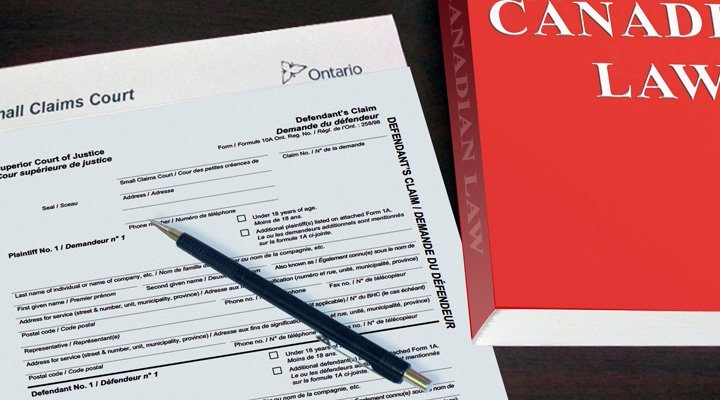Defendant’s Claim

The following is not a comprehensive text on how to prepare, issue and serve a Defendant’s Claim in small claims court but, rather, a general overview in order to give the reader a general idea of the process. It is not to be considered as legal advice or an instruction on how to prepare a Defendant’s Claim or its pleadings. For your specific mater, you should consult a paralegal or a lawyer to prepare your Defendant’s Claim.
A Defendant’s Claim is the same as a Plaintiff’s Claim, except that it is the Defendant who is preparing and issuing it either against the Plaintiff in the main action or against one or more third parties to the action. Before reading further here, read my article found under Plaintiff’s Claim for a basic understanding of how that is done. This is similar.
Suppose you are being sued improperly by someone and not only do you not owe the money which they are claiming from you in their Plaintiff’s Claim, but also that they actually owe you money. Aside from filing a defence explaining why you don’t owe them any money, you will also have to issue a Defendant’s Claim against them for the money that they owe to you.
Determine how much you should claim against the person who is suing you and put that amount on the Defendant’s Claim. Remember in the Plaintiff’s Claim in which you are being sued, the person suing you is the Plaintiff and you are the Defendant. Now in the Defendant’s Claim, the roles are reversed. In this Defendant’s Claim, you are now the Plaintiff and the person who was suing you is now the Defendant.
As with the Plaintiff’s Claim, in preparing your Defendant’s Claim, you provide to the court and the Defendant a written description of what occurred and why you are suing, called counter-suing. The general rule when preparing your Defendant’s Claim is to make your pleadings brief, succinct, and to the point. Avoid pleading evidence, just plead the facts of the matter. You are also supposed to attach to your Defendant’s Claim any documents that are relevant to proving your claim.
Once you are satisfied that you have named the Defendant(s) correctly, that you have sued for the correct amount as can be proved, that you have prepared your pleadings with attached documents and filled out the proper Defendant’s Claim form, you are ready to attend at the court and issue your Defendant’s Claim.
Issuing a Defendant’s Claim
Bring enough copies of your Defendant’s Claim with attached documents so that the court can keep one and you will have enough to both serve the Defendant or Defendants and you can also keep a copy of the issued claim for yourself. It is possible, depending on the method of service that you will use, that you may need two issued copies to serve on one Defendant.
The cost to be paid to the Court (Minister of Finance) to issue a Defendant’s Claim is $75.00.
As long as your paperwork is accurate and your claim is legible, the court clerk will issue your claim. It will be given the same Claim No as the original; matter was given where you are the Defendant. The differentiation will be in the last two numbers. The original Claim may have -00 as the last two digits. You new Defendant’s Claim may have –D1 at the end. Once issued, you are then obliged to serve the Defendant’s Claim on the Defendant.
Serving a Defendant’s Claim
There are various methods that can be used for serving a Plaintiff’s Claim. Those methods are set out in Rule 8 of the small claims court rules. They are too numerous and varied to be set out in this text, but the best service on an individual Defendant is to place the Defendant’s Claim in the Defendant’s hand or drop it at his feet if he won’t extend his hand to accept it. This is called personal service. This method of service makes it very difficult for the individual Defendant to successfully argue later that he never received the Claim. There are other methods of service of a Defendant’s Claim on a Defendant if personal service cannot be done.
Once the Defendant’s Claim is served, the Defendant has 20 days from the date of service in which to file a defence, failing which the Plaintiff may then take steps to stop the other side from filing a defence.
To make sure your law suit is done properly, call A. Perlman Paralegal Services Professional Corporation today at (416) 399-4826 or (519) 943-0590.
